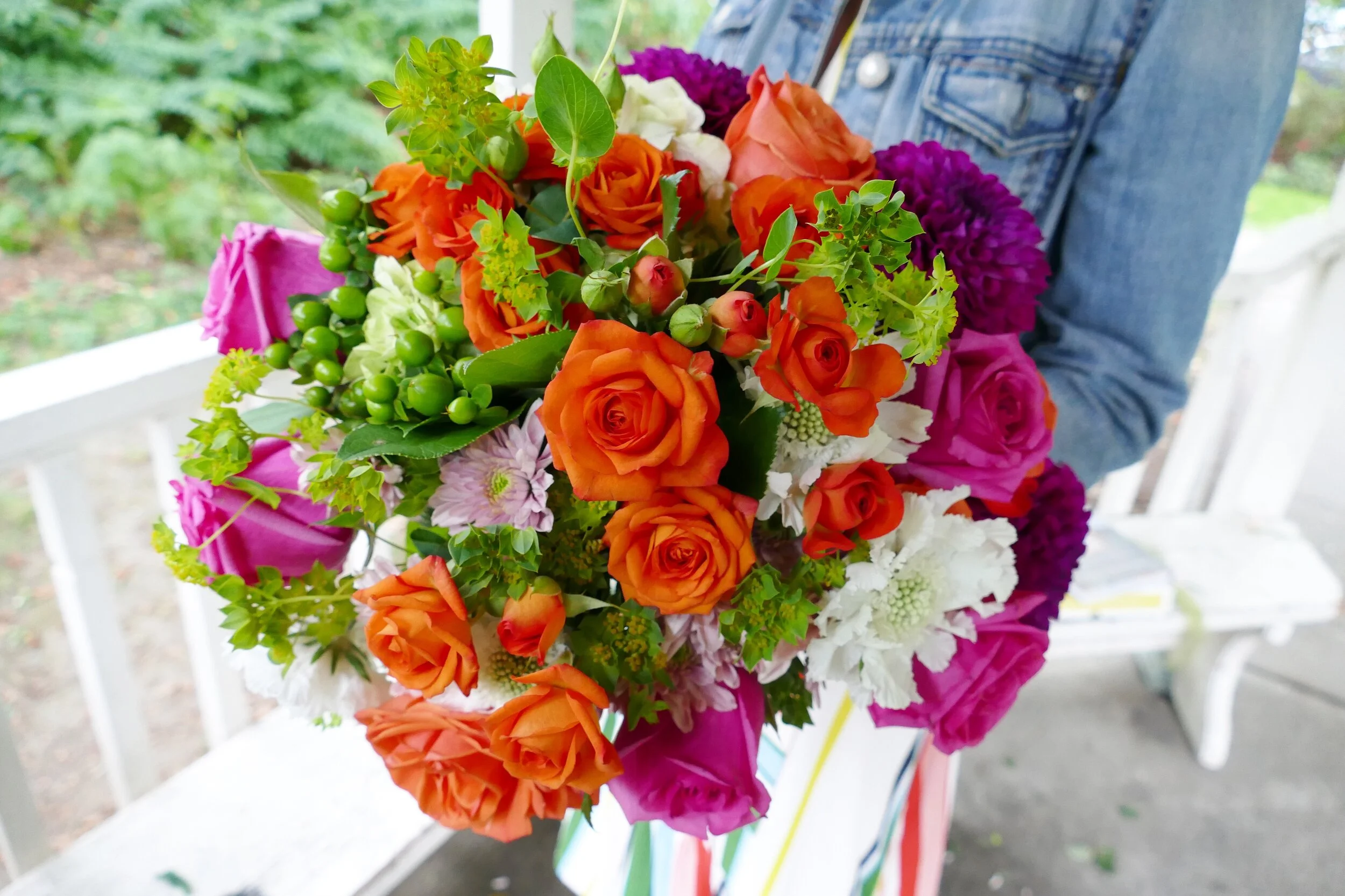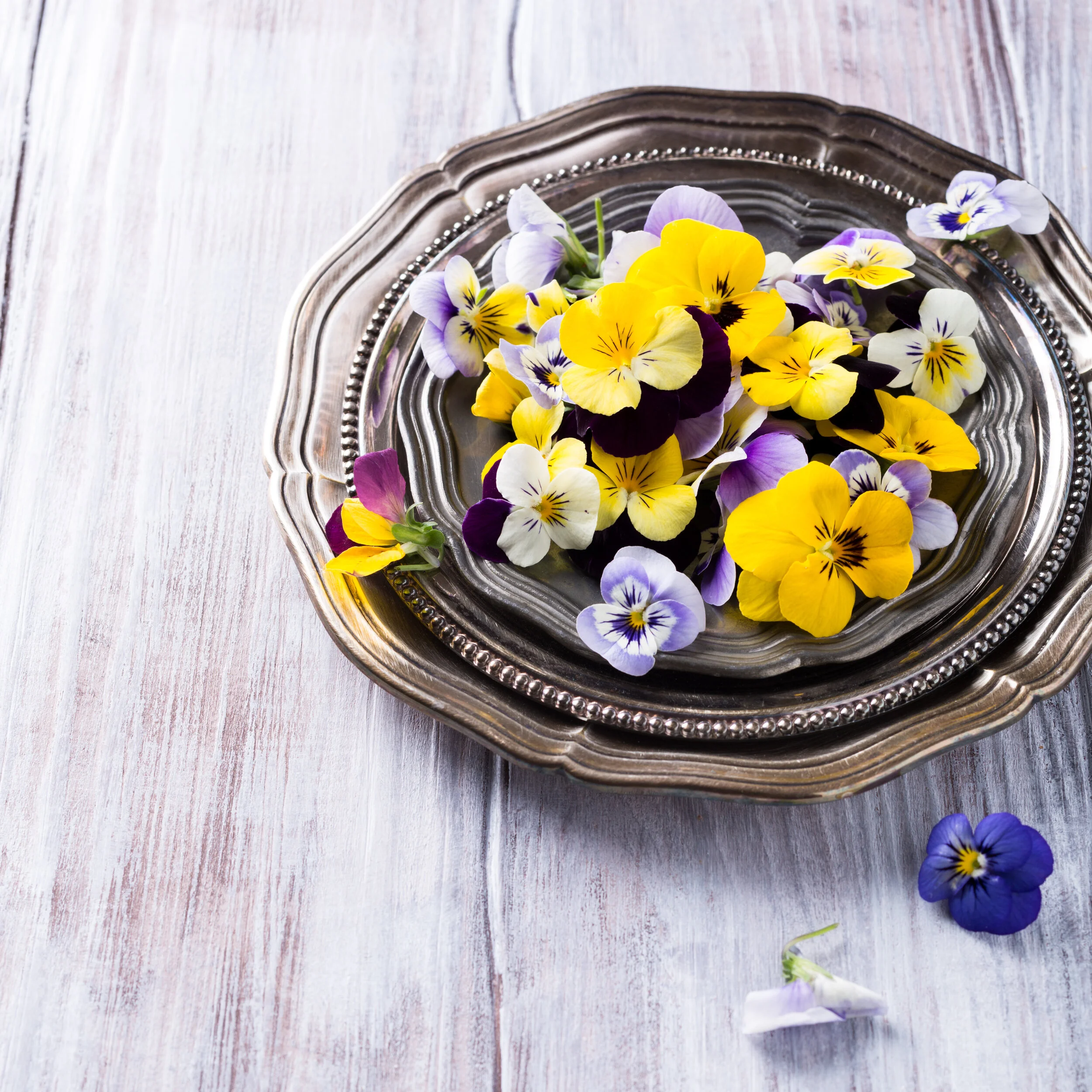The Floral Prescription - What It Is, What It Isn't, and What’s Coming Next
The Floral Prescription blog began in November 2019. I wanted to create a place where flower-lovers could go to find information and inspiration about all things floral. Things like, how flowers have a positive effect on our well-being, exploring the language of flowers, learning about …
I began The Floral Prescription blog in November 2019. I wanted to create a place where flower-lovers could go to find information and inspiration about all things floral. Things like, how flowers have a positive effect on our well-being, exploring the language of flowers, learning about edible flowers, introducing flower-filled travel destinations, and delving into flowers in art, music, and literature.
One topic I’ve always stayed away from is gardening. I purposely did this for two reasons: 1 - there is already so much information out there about growing flowers, and 2 - not everyone who loves flowers is also interested in gardening (myself included).
Now sixteen months have gone by since I started The Floral Prescription, and along the way, something changed for me. While I still want my blog to be the ‘go-to spot’ for all things floral that’s not related to gardening, I DO want to learn to grow my own flowers.
More and more lately, I’ve been wishing I had my own readily available source of local, seasonal flowers, and organically grown edible flowers, and I knew the best way to have them would be to grow them myself. And as fate would have it, as soon as I made that decision a community garden plot became available in my neighbourhood and I was lucky enough to have it allocated to me. My plan is to plant half of it as a cut-flower patch and use the other half to grow edible flowers.
This new venture I’m starting will not have much impact on my blog. I still believe there should be a place for flower lovers to go to get floral information that is not garden-related, so the majority of my blog will still have nothing to do with gardening.
However, I do plan to document my ‘learn to flower garden experience’ on my Instagram stories. I hope you’ll enjoy following along with me as I try to grow cosmos and sweet peas, nasturtiums, and calendulas. I’m expecting to learn a lot along the way, hoping for not too many mistakes, and will be delighted if at some point this summer I have some flowers to cut and put in a vase, and others to sprinkle over a salad.
This project is meant to help me learn and grow in new ways. I’m not switching from sharing about ‘all things floral, all year long’ to ‘how to start a flower garden’, but I am ‘practicing what I preach’ by finding ways to incorporate flowers into my life on a daily basis.
In other news, I want to let you know that I’m busy working away on my next issue of The Floral Prescription Magazine (April/May/June issue). I’ll be emailing it to all my blog subscribers during the first week of April. This is my way of thanking you for being part of The Floral Prescription. If you’re reading this and haven’t subscribed to my blog yet, all you need to do is fill in your email address in the ‘subscribe’ box on my website.
I appreciate each and every one of you who has supported me over the past 16 months. I love what I’m doing, I love what I’m sharing, I love what I’m learning along the way, and I love the plans I’m making for The Floral Prescription in the future.
Have Your Own Readily Available Source Of Fresh Edible Flowers
There’s nothing like the addition of fresh flowers to your cooking or baking to take it from something ordinary to something extraordinary. A sprinkling of colourful petals on a salad suddenly makes it look gourmet, and a few carefully placed blooms on a cake makes …
There’s nothing like the addition of fresh flowers to your cooking or baking to take it from something ordinary to something extraordinary. A sprinkling of colourful petals on a salad suddenly makes it look gourmet, and a few carefully placed blooms on a cake makes it look like a professional decorated it. The problem is, (at least where I live), fresh edible flowers are not readily available.
However, there is a simple solution - grow your own. I have done very little gardening in my life, but the thought of having a readily available source of edible flowers has spurred me on to learn how to grow them.
There is an almost overwhelming amount of information out there about growing edible flowers. It’s a lot to sift through, but in the end, I narrowed it all down to three easy to grow choices. Here’s what I’ve learned about them:
Nasturtiums:
Nasturtiums became my first pick as soon as I read the words ‘Very easy to grow, they thrive on neglect’. (Not that I would ever be neglectful, but it makes it sound like a pretty fool-proof flower to grow!)
About growing:
Grows quickly from seeds or can be bought as bedding plants;
Grows well in containers;
Prefers full sun, but if in a really hot area can tolerate afternoon shade;
Consistent moisture, but not damp is best;
Do not fertilize as it will cause more leaves than flowers to grow.
About eating:
Peppery, spicy flavour (cross between a radish and watercress);
Full of vitamins A, C, and D;
All parts are edible (petals, leaves, seeds);
Come in reds, oranges and yellows;
Used in dishes whole, or torn into pieces.
Calendula:
Calendula is a summertime favourite with gardeners.
About growing:
Easy to grow from seed right in the garden;
Regular watering is preferred, but they can tolerate drier conditions;
Plant in nourishing soil - no extra fertilizing needed;
Dead-head plants and they will continue to bloom from early summer to late fall.
About eating:
Flavour can be spicy, bitter, tangy, or peppery;
Comes in various shades of yellow and orange;
Adds a yellow tint to food;
Pull the petals off the centre of the bloom to use in salads, or to decorate baking;
Dried calendula can be made into a tea, or added to soups or stews to calm an upset stomach.
Lavender:
While very popular as an ingredient in beauty products, lavender is also edible.
About growing:
Grow in a well-drained area, a raised bed, or in containers;
Prefers full sun;
Very little watering required (most people over-water);
No fertilizer is necessary
Harvest lavender when the first few flowers are opening on each stem.
About eating:
Can be used fresh or dried;
Distinctive floral taste mixed with a hint of rosemary and mint;
A little goes a long way - use sparingly;
Use to make tea, infuse sugar or honey, make herbed butter, or decorate sweet treats.
These are the first three edible flowers I’m going to try and grow as they all seem very forgiving to beginner gardeners. But remember - these flowers are for eating so make sure to grow them organically. For other important safety tips when consuming edible flowers read my post ‘Top 3 Rules for Using Edible Flowers’.
If you have any tips or advice to give a beginner gardener about growing flowers please put them in the comments below. They would be much appreciated.
PS - A little something I thought I’d share with you. I live in an apartment, so I was imagining I would need to grow flowers in pots out on the balcony. But, two days after I’d made the decision to try growing edible flowers, one of those weird coincidences in life occurred. I was out for my morning walk in the neighbourhood and I passed a place with a sign saying there were a few community garden plots available and if interested to apply. So I did - and I was accepted to be allocated one of the plots this year! So now I will have my own little patch of soil to work in. Thank you Pacific Spirit Community Garden!




